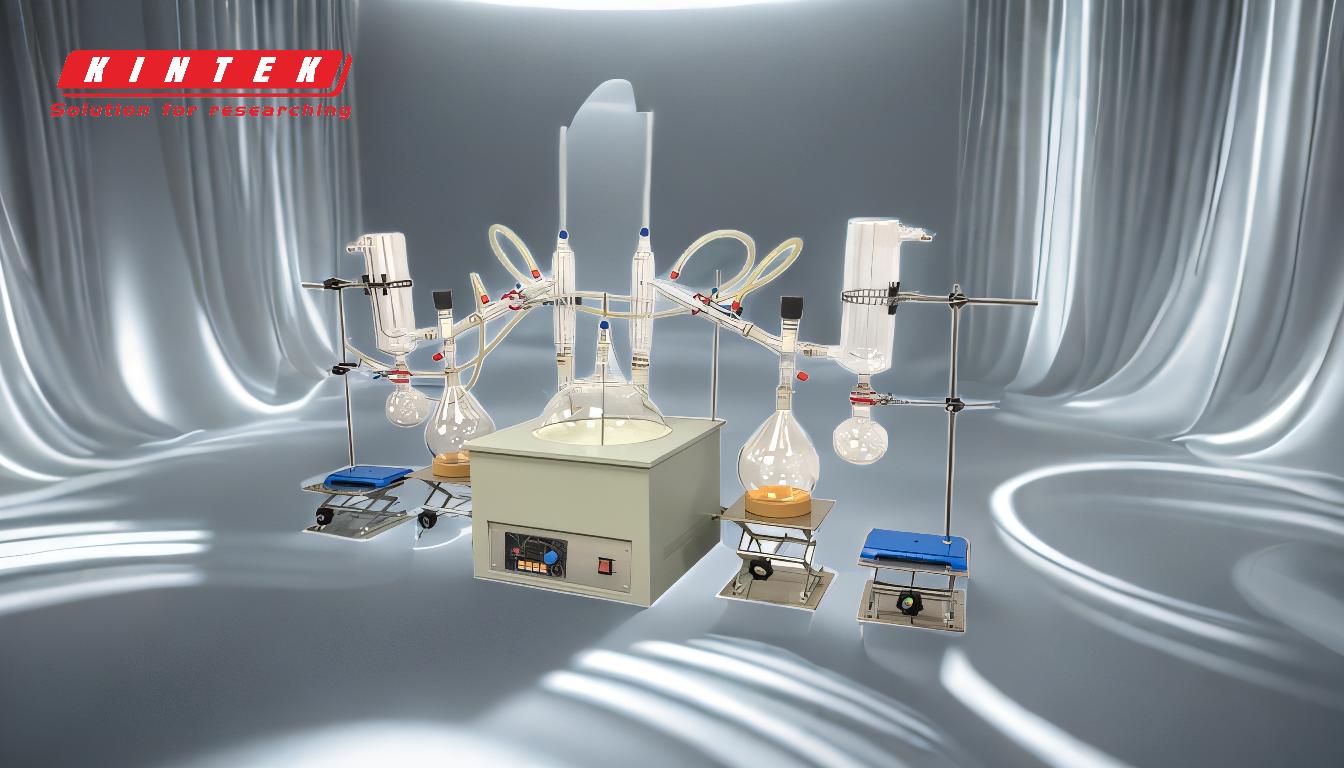Short path distillation and molecular distillation are both techniques used for separating and purifying substances, particularly heat-sensitive materials. While they share similarities, they differ in their operational principles, pressure conditions, and applications. Short path distillation is a general technique that operates under reduced pressure, allowing the sample to travel a short distance, minimizing thermal degradation. Molecular distillation, on the other hand, is a specialized form of short path distillation that operates under extremely low vacuum pressure (less than 1x10^-2 mbar), ensuring that the mean free path of molecules exceeds the distance between the evaporator and condenser. This eliminates back-pressure and makes molecular distillation ideal for high-purity separations of thermally sensitive compounds.
Key Points Explained:

-
Definition and Relationship:
- Short Path Distillation: A technique where the sample travels a short distance under reduced pressure, minimizing thermal degradation. It is often used for analytical purposes and small-scale production.
- Molecular Distillation: A specialized form of short path distillation that operates under extremely low vacuum pressure, ensuring the mean free path of molecules is longer than the distance between the evaporator and condenser. This eliminates back-pressure and enhances separation efficiency.
-
Operational Pressure:
- Short Path Distillation: Operates under reduced pressure, typically higher than molecular distillation. The pressure is sufficient to reduce boiling points but not as low as in molecular distillation.
- Molecular Distillation: Operates under extremely low vacuum pressure, typically less than 1x10^-2 mbar. This ultra-low pressure ensures that molecules can travel directly from the evaporator to the condenser without intermolecular collisions.
-
Mean Free Path and Back-Pressure:
- Short Path Distillation: The mean free path of molecules is shorter than the distance between the evaporator and condenser, which can lead to some back-pressure and intermolecular collisions.
- Molecular Distillation: The mean free path of molecules exceeds the distance between the evaporator and condenser, eliminating back-pressure and ensuring that molecules are separated before any collisions occur.
-
Applications:
- Short Path Distillation: Suitable for small-scale operations and analytical purposes. It is used for purifying heat-sensitive materials but is limited in scale and production capacity.
- Molecular Distillation: Ideal for high-purity separations of thermally sensitive compounds, such as natural products, essential oils, and pharmaceuticals. It is also used in large-scale industrial applications due to its efficiency and ability to handle heat-sensitive materials.
-
Equipment and Process:
- Short Path Distillation: Typically involves a simple setup with a short distance between the evaporator and condenser. The process is relatively straightforward but may require careful control of pressure and temperature.
- Molecular Distillation: Requires specialized equipment capable of maintaining extremely low vacuum pressure. The process is more complex but offers higher purity and efficiency, especially for large-scale operations.
-
Advantages and Limitations:
-
Short Path Distillation:
- Advantages: Simple setup, suitable for small-scale and analytical applications, effective for purifying heat-sensitive materials.
- Limitations: Limited scale and production capacity, potential for some thermal degradation due to back-pressure.
-
Molecular Distillation:
- Advantages: High purity and efficiency, suitable for large-scale operations, minimal thermal degradation due to ultra-low pressure.
- Limitations: Requires specialized equipment, more complex process, higher initial investment.
-
Short Path Distillation:
In summary, while both short path distillation and molecular distillation are used for purifying heat-sensitive materials, molecular distillation offers higher purity and efficiency due to its operation under extremely low vacuum pressure. Short path distillation, on the other hand, is more suited for small-scale and analytical applications. Understanding these differences is crucial for selecting the appropriate technique based on the specific requirements of the application.
Summary Table:
| Aspect | Short Path Distillation | Molecular Distillation |
|---|---|---|
| Definition | Operates under reduced pressure, minimizes thermal degradation for small-scale applications | Specialized form of short path distillation; operates under extremely low vacuum pressure |
| Pressure | Reduced pressure (higher than molecular distillation) | Extremely low vacuum pressure (< 1x10^-2 mbar) |
| Mean Free Path | Shorter than evaporator-condenser distance; some back-pressure | Exceeds evaporator-condenser distance; eliminates back-pressure |
| Applications | Small-scale, analytical purposes | High-purity separations, large-scale industrial applications |
| Equipment | Simple setup, short distance between evaporator and condenser | Specialized equipment for ultra-low pressure |
| Advantages | Simple setup, effective for small-scale purification | High purity, minimal thermal degradation, suitable for large-scale operations |
| Limitations | Limited scale, potential for thermal degradation | Requires specialized equipment, higher initial investment |
Need help choosing the right distillation technique for your application? Contact our experts today!










